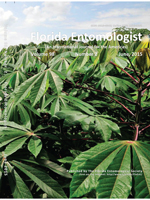Microplitis similis Lyle (Hymenoptera: Braconidae) is a solitary endoparasitic braconid that generally parasitizes larvae of Spodoptera exigua (Hübner) (Lepidoptera: Noctuidae) and many other noctuid species. To understand host preference, fitness, and the effects of M. similis on the hosts, we compared percentage parasitism, development periods, and the effects on host growth in candidate noctuid species. We found high levels of parasitism of S. exigua and Spodoptera litura (F.) larvae but not of Helicoverpa armigera (Hübner) (Lepidoptera: Noctuidae) larvae. The parasitoid wasp larvae took similar amounts of time for development on S. exigua and S. litura larvae, i.e., 13.87 ± 0.15 and 13.69 ± 0.42 d, respectively. Compared with the control larvae, the growth and development of the hosts were severely affected. The hosts were able to molt to 4th instars after being parasitized as early 3rd instars, but were unable to develop to the 5th instar. The body weight was similar between parasitized and non-parasitized larvae within the first 4 d (3 d in S. litura) but later began to show a significant difference from the 5th day on (4th day in S. litura). The host larvae eventually weighed up to 50 to 80% less than the non-parasitized larvae. Furthermore, the host larvae lived for an extended period in the same instar after egression of the parasitoid, but the body mass did not increase.
How to translate text using browser tools
1 June 2015
Development of Microplitis similis (Hymenoptera: Braconidae) on Two Candidate Host Species, Spodoptera litura and Spodoptera exigua (Lepidoptera: Noctuidae)
Shun-Ji Li,
Ju-Ping Huang,
Yang-Yang Chang,
Si-Yuan Quan,
Wen-Ting Yi,
Zi-Shu Chen,
Shuang-Qing Liu,
Xiao-Wen Cheng,
Guo-Hua Huang

Florida Entomologist
Vol. 98 • No. 2
June 2015
Vol. 98 • No. 2
June 2015
age-specific survival rate
braconid
bracónido
crecimiento
desarrollo
development
growth




